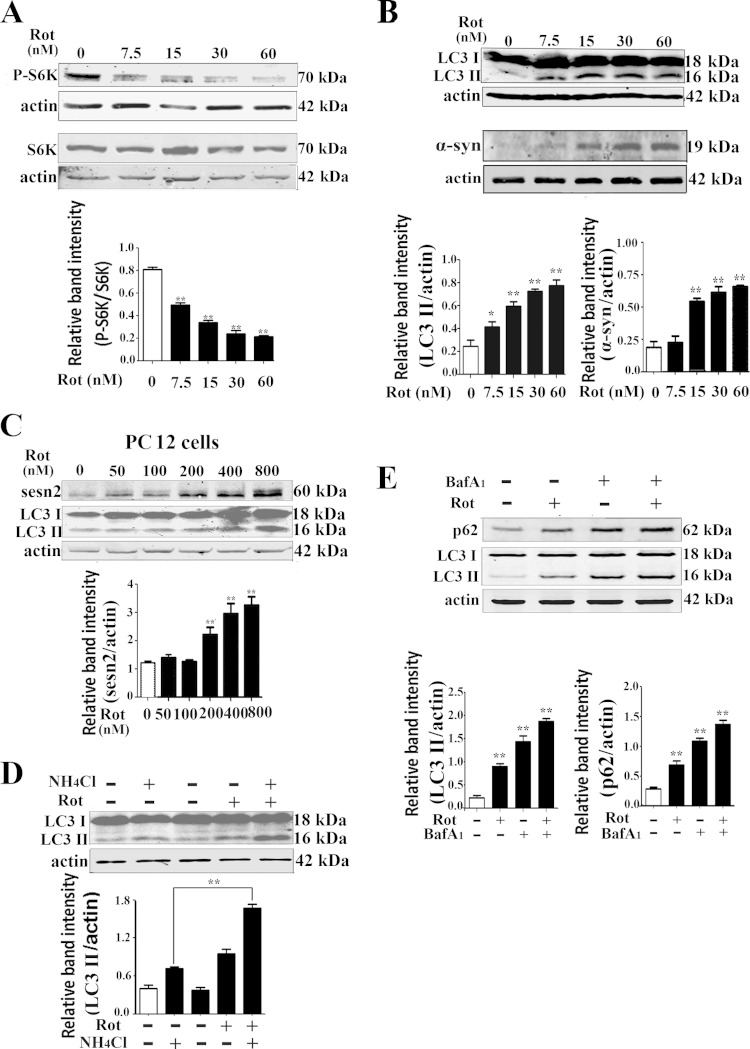FIG 2.
Autophagy was enhanced after rotenone treatment. (A) Mes 23.5 cells were treated with rotenone at the indicated concentrations, and immunoblotting detected phosphorylated and total levels of p70S6K (Thr389). (B) After rotenone treatment, cell extracts were used for immunoblotting LC3 and α-synuclein proteins. (C) PC12 cells were treated with rotenone for 12 h and immunoblotted for detection of sestrin2 and LC3 protein levels. (D) Mes 23.5 cells were treated with DMSO and 15 nM rotenone, respectively, and harvested for detection of LC3 levels. Two hours before harvesting, NH4Cl (ammonium chloride, 10 mM) was added to block autophagic degradation. (E) Mes 23.5 cells were treated with DMSO or 15 nM rotenone for 12 h and harvested for detection of LC3 and p62 levels. Two hours before harvesting, 100 nM bafilomycin A1 was added to block autophagic degradation. Actin was used as a loading control. Band density of phosphorylated levels relative to total levels of p70S6K and band density of sestrin2, p62, or LC3-II relative to actin were analyzed with ImageJ and Prism software. Values are the means ± SEM from three independent experiments. *, P < 0.05; **, P < 0.01.

